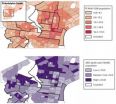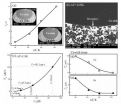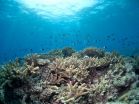(Press-News.org) The willingness of decision makers to take risks increases when they play games of chance with money won earlier. Risk taking also rises when they have the opportunity to compensate for earlier losses by breaking even. This outcome was demonstrated by Dr. Kaisa Hytönen, a Finnish Aalto University researcher in neurofinance, together with her international colleagues.
There are frequently various linkages between financial decisions: the circumstances accompanying the decision are rarely completely independent of each other. Both profits and losses, for example, on the securities market, in horse races and in various games, typically increase the amount of risk people are willing to take.
'A brain scan shows that increased risk taking is connected with the emotional reaction caused by winning and losing, and in addition to that, reflection decreases. The stronger the emotion areas of the brain react to experiences of profit and loss, the more people subsequently accept risk,' Dr. Hytönen explains.
The reasons behind financial decision making are determined in neurofinance science by means of operational magnetic resonance imaging. In the test, the brain activity of the subjects was entered as they made consecutive choices subject to risk.
The research data concerning behaviour confirms that the choices people make are influenced by previous experiences and are therefore pathway-bound. The operational magnetic images indicate that the desire to engage in greater risk taking, after profit and loss, is connected with the increasing activity in the processes affecting brain mood, together with the reduction in activity related to processes influencing deliberation and reflection in the brain.
INFORMATION:
The article in the Journal of Economic Behavior & Organization:
Kaisa Hytönen, Guido Baltussen, Martijn J. van den Assem, Vasily Klucharev, Alan G. Sanfey, Ale Smidtsa: Path Dependence in Risky Choice: The Affective and Deliberative Processes in Brain and Behavior http://www.sciencedirect.com/science/article/pii/S0167268114000304
For further information,please contact:
Dr. Kaisa Hytönen
kaisa.hytonen@aalto.fi
Tel.: +358 50 344 2372
Aalto University School of Science, O.V. Lounasmaa Laboratory
Brain Research Unit web pages http://ltl.tkk.fi/wiki/BRU
Image link: http://materialbank.aalto.fi:80/public/56706c77c8F3.aspx
Caption: The brain's emotion network is activated at the moment of profit and loss, which results in an increase in the desire to take risks.
Neurofinance study confirms that financial decisions are made on an emotional basis
2014-04-10
ELSE PRESS RELEASES FROM THIS DATE:
HIV battle must focus on hard-hit streets, paper argues
2014-04-10
PROVIDENCE, R.I. [Brown University] — In U.S. cities, it's not just what you do, but also your address that can determine whether you will get HIV and whether you will survive. A new paper in the American Journal of Public Health illustrates the effects of that geographic disparity – which tracks closely with race and poverty – and calls for an increase in geographically targeted prevention and treatment efforts.
"People of color are disproportionately impacted, and their risk of infection is a function not just of behavior but of where they live and the testing and treatment ...
Obsessive-compulsive disorder may reflect a propensity for bad habits
2014-04-10
Philadelphia, PA, April 10, 2014 – Two new studies published this week in Biological Psychiatry shed light on the propensity for habit formation in obsessive-compulsive disorder (OCD). These studies suggest that a tendency to develop habits, i.e., the compulsive component of the disorder, may be a core feature of the disorder rather than a consequence of irrational beliefs. In other words, instead of washing one's hands because of the belief that they are contaminated, some people may develop concerns about hand contamination as a consequence of a recurring urge to wash ...
Solute redistribution profiles during rapid solidification of undercooled ternary Co-Cu-Pb alloy
2014-04-10
Researchers at the Department of Applied Physics, Northwestern Polytechnical University, in Xi'an, China, are engaged in revealing the mysteries of solidification process and the development of new materials using self-designed experimental instrument which can simulate the space environment such as containerless state. Solidification mechanism is of great importance to better understand the relationship between solidification process and microstructure evolution, so that we can follow them to design and prepare new materials which can meet the application requirements.
Dr. ...
New report provides solution to NEET challenge in UK and abroad
2014-04-10
A NEW strategy to help young people find jobs that pay fair wages, accompanied by high quality training and better career opportunities, has been developed by a University of Huddersfield professor. Outlined in a specially-commissioned research report, it is beginning to catch the attention of policy-makers throughout the UK.
After conducting years of funded research into the challenges that face young people dubbed NEET – meaning that they are not in employment, education or training – Professor Robin Simmons has devised the concept of a Youth Resolution designed to ...
Researchers show fruit flies have latent bioluminescence
2014-04-10
WORCESTER, Mass. – New research from scientists at the University of Massachusetts Medical School shows that fruit flies are secretly harboring the biochemistry needed to glow in the dark —otherwise known as bioluminescence.
The key to activating this latent ability is a novel synthetic analog of D-luciferin developed at UMMS. The findings, published in the journal Proceedings of the National Academy of Sciences, suggest that the inherent biochemistry needed for bioluminescence is more common than previously thought. Synthetic luciferins can unmask latent enzymatic ...
Coral reefs of the Mozambique Channel a leading candidate for saving marine diversity
2014-04-10
Marine scientists keen on finding patterns of coral decline and persistence in gradually warming oceans have a complex challenge: how to save reefs containing the most diversity with limited resources. In the Western Indian Ocean, researchers from the Wildlife Conservation Society, the University of Warwick, the ARC Centre for Excellence of Coral Reef Studies, Simon Fraser University, University of North Carolina at Chapel Hill, and other groups have found that the corals of the Mozambique Channel should be a priority for protection as climate change continues to threaten ...
Reef fish arrived in 2 waves
2014-04-10
The world's reefs are hotbeds of biological diversity, including over 4,500 species of fish. A new study shows that the ancestors of these fish colonized reefs in two distinct waves, before and after the mass extinction event about 66 million years ago that wiped out the dinosaurs.
Reef fish represent one of the largest and most diverse assemblages of vertebrates, according to Samantha Price, a postdoctoral researcher in the Department of Evolution and Ecology at UC Davis. Price is first author on a paper describing the work, published April 2 in the journal Proceedings ...
CU researchers unraveling what's behind the sniffles, hoping for a treatment
2014-04-10
Scientists at the University of Colorado School of Medicine have shed light on one of the most common of ailments – the runny nose.
Your respiratory tract is under constant attack and the nose is the first line of defense. Often, especially as the weather warms, the assault comes from allergens, which cause the body to fight off a perceived threat. Infections, too, are a problem.
But millions of people get a runny nose and have difficulty breathing without an allergic attack or infection. What many people call the sniffles, scientists refer to as "non-allergic rhinitis."
Although ...
China looks to science and technology to fuel its economy
2014-04-10
Maintaining stability in the face of rapid change and growth, and proactively partaking in cooperative global ties in science and technology fields will be key in helping China become an innovation-based economy, according to Denis Simon, vice provost for International Strategic Initiatives at Arizona State University.
One of the world's leading experts on science, technology and innovation in China, Simon recently hosted an ASU conference that focused on the evolving role of science and technology in China's international relations.
Supplemented with strategic investments ...
Researchers looking to create new bone tissue generation technique
2014-04-10
UT Arlington and Texas Health Arlington Memorial Hospital are investigating whether bone grown from the body's own stem cells can replace traditional types of bone grafting.
The process, which has been successful in previous lab experiments, uses biodegradable polymer scaffolding material and bone morphogenetic protein, or BMP, which was inserted into the abdomen of mice to attract stem cells that in turn produced bone. BMPs are proteins known to promote bone growth. The research is detailed in a new paper, "Tissue Engineering Bone Using Autologous Progenitor Cells in ...




